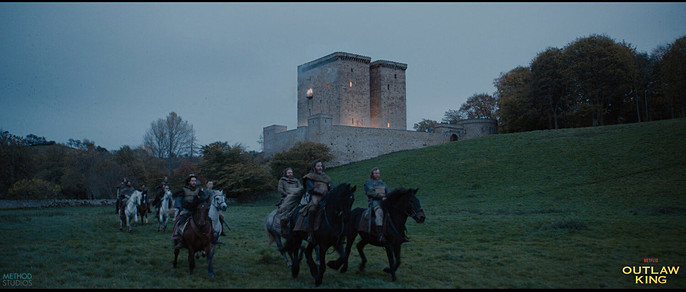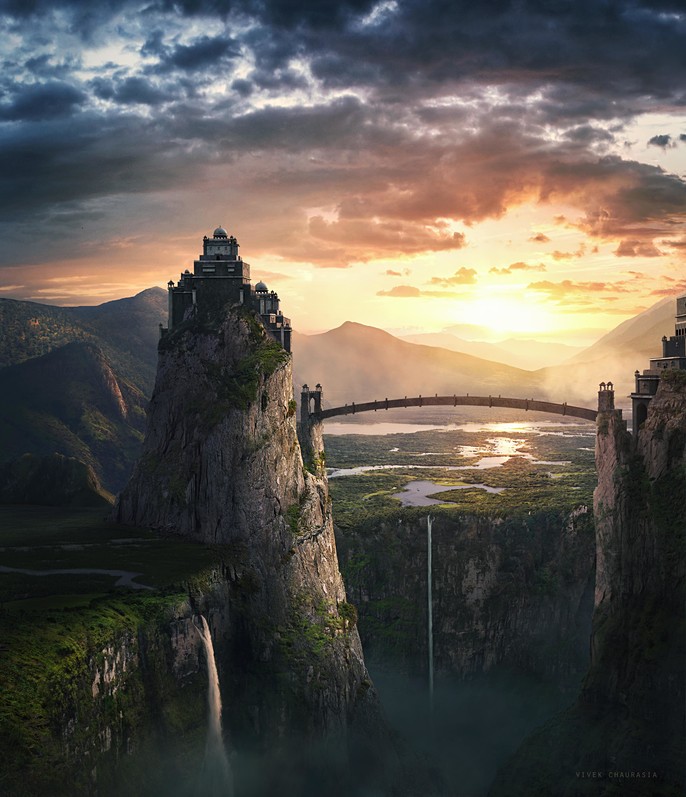
Becoming a Matte Painter? Here is Everything You Need to Know
Matte Painting is a painted representation of a location or area that gives the illusion that it's real. From movies to games to art, matte painting creates a world so real we can imagine ourselves in it.
We have flown over roof tops with Mary Poppins, ridden a Luck Dragon in Neverending Story, experienced an adventure with Indiana Jones, and even sailed on the unsinkable ship, Titanic.
Without the dedicated imagination of matte painters major works of art might never have been created. And though matte painting has evolved to being mostly digital, the concepts are still the same.
Thinking of getting into the industry? Not sure where to start. Here is everything you need to know about becoming a matte painter.
Getting Started
Matte painting is an advanced technique that requires more than just a proficiency in traditional painting and Photoshop. When adding to a real life environment to create an imaginative world, you'll need to consider angles, lighting, and geometric shapes to make it appear real.
This is no easy feat and requires an artist to have a solid understanding of the basics of both traditional drawing and painting, as well as, a proficiency in programs like Photoshop.
Education and Experience
Many matte painters attend a program or work to achieve their undergraduate degree which gives them the foundation to understand how to begin matte painting.

This path isn't for everyone though. A great way to gain experience is to do it the traditional way. Go to a park, look out your window, sit on your back porch and paint your landscape.
Focus on lighting as that will be a key component to combining two locations to make one.
The main takeaway is that learning the fundamentals of traditional art is crucial to matte painters and this should be the first step, regardless of how you decide to go about it.
How Matte Painters Utilize Photoshop
Photoshop is the most commonly used software for matte painting. You will have to combine still photography and rendered CG elements to create backgrounds, so it's important to be proficient.
In a session with Gnomon, matte painter, Nick Hiatt (The Force Awakens, Thor: The Dark World) shared helpful tips to help any ambitious artist grasp matte painting. Highlights included:
- Learning both 2D and 3D
- Photo references are key
- Have your Photo shop file or Nuke seen set up properly before starting
- Utilize Photoshops background save feature to help your workflow
- Flip the canvas for a different perspective

What Do Recruiters Look for When Hiring for a Matte Painter?
Required qualifications vary depending on the company and the job, however, most studios are looking for an artist who has basic skills in creating a realistic environment including photography experience. Specific software to know includes:
- Autodesk Maya
- 3ds max
- Photoshop and Nuke
- Linux, Vue, Terragen, Mudbox, or Zbrush
Pro Tip: During the interview process you'll want to exhibit the ability to work within a team and also lead it, if needed. It's also important to express your appreciation for constructive criticism to show your interest in continuing to improve your skills.
What Will You Do Everyday?
A benefit of matte painting is that each day brings new challenges. You can expect to work on set extensions and background painting that includes landscapes and cityscapes depending on need.
Pro tip: When creating environments it's important to think inside and outside the box. It must include everything that exists in the fictional world sometimes reaching beyond reality.
Depending on the project, you might need to take many high resolution photos to use as references. The alternative being to purchase photo reference packs.
You can also expect to work with other departments, specifically CG to make the matte painting more realistic and believable.
Interview with a Matte Painter
We reached out to our friend and matte painter, Marco Iozzi, and asked him some questions about what it's like to be a matte painter and what his workflow looks like.
What does the typical day look like for a matte painter? What can artists expect to do?
In the past 6 years I realized how I needed a much stronger foundation to improve my matte painting and concept art work. I studied Design at University and quickly jumped into 3D. I realized I needed to go back to traditional drawing and painting to create stronger basis.
We mostly use Photoshop with techniques like photo bash and 3D, but the knowledge that comes from traditional art is, in my opinion, mandatory. This is not only because drawing and painting allows you to connect these different techniques into a coherent final piece of work, but because for me drawing on paper is a way to think, to design and solve problems. That’s why I always dedicate around 1 and a half to 2 hours to drawing traditionally.
One day, I'll do figure drawing, as learning how to draw the body is one of the most complex yet satisfying thing to draw. The other days I generally do architectural studies, from my photos or from internet research.


What an artist can expect depends on the project. When I work as a matte painter I sometimes receive some assets to work on, sometimes I need to do everything on my own. Having worked for many years as a 3D artist for movies, and knowing how these tools are important, I often deal with the 3D side on my own. Either I gather elements from my 3D library, buy models online, or I’m provided with some low to medium res assets. I then texture light and render.
This becomes the base for the paint over phase in photoshop. 3D allows me also to be flexible, so that if the client changes or we want to explore different lighting scenarios I can go back to a solid base.
A very important element is understanding if the camera moves and how. This will lead to the decision of what (3D / 2D, a mix..) and how to use the tools.
Matte Painting has been used for many many years (1939's Gone with the Wind had matte paintings already) but in the past it was 2D and set extension only, so you did not see perspective change.

More and more, as technology has evolved, we changed the way we create them as well as the use of them, so the line between matte painting and 3D digital environments is more and more blurred, and we often need to create
complete sets in which the camera is able to fly. By things becoming more complex, design work in early stages is of paramount importance.
What does the workflow look like for a project- start to finish?
Sometimes I’m provided with references, they could be original concept artwork or general ideas of mood/style and general direction.
Often I’m asked to provide ideas as well, because no concepts were originally created for that shot or because what was created in pre-production needed to be changed.
As this happened more and more I decided to expand my knowledge in the concept art world, that’s why I often work on projects that require the 2 “ends of the spectrum” : from ideation to final execution.

Framestore/Apple TV

Framestore/Apple TV

Framestore/Apple TV

Ideally I try to execute the design process in an organic way so that it blends “as painless as possible” into the final execution. When I create concepts I tend to set the basis for a final high resolution matte painting. This is a more coherent approach and ideally saves time. This is the ideal goal, then each situation is different and you need to adapt to client needs and always present limitations.
Once i have their brief, reference or concepts I spend the initial hours gathering material from my library. I always loved photography so throughout the years I built a huge library with metadata so, within adobe Lightroom, I can search for
keywords easily and spend less time looking for material. It took A LONG time to catalogue all the images i had but it was well worth.
These images can become “ingredients” for my painting as well as inspiration.
Sometimes I also gather images online, paying attention though to use them properly for copyright reasons.
If the DMP requires 3D work I build my assets (or kit bash them) or use what I’m provided, so I spend the initial time in 3D. I try to create a solid base for my paint over.
Through experience you understand how far you push 3D before 2D takeover.
As always, time is the key, so you need to find the proper balance between 2D / 3D.
The first round could be for me to get the layout and composition approved from the clients.
Once this is done I render different passes from 3D and I then start the 2D work.
If I use 3D within Photoshop, where I then bring altogether, my reference, images, renders etc and start giving a coherent look to the piece.
If I have a foreground plate the first goal is to work with VALUES, so I tend to work in black and white to match the plate. Colors and details come after.
Some projects then require me to go to Nuke in case I need to create 2.5 projections, which means projecting my final painting, divided in layers, onto low res geometry or cards, so that we have a sense of parallax when the camera moves.
Start Your Journey
Whether you're already on your way to becoming a matte painter, been toying with the idea of switching careers, or are just getting started, check out some of the great tutorials on Cubebrush to continue on your journey.
Additionally, check out the Cubebrush community forums. They give artists the opportunity to showcase their work and get feedback from industry vets.

This post was written with help of two amazing artists:
Vivek Chaurasia- Digital artist and Matte Painter
Marco Iozzi- Matte Painter and Concept Artist: Instagram